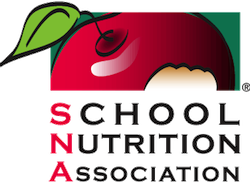
Seems they’d rather drink teacher’s black coffee.
Morgan, the director of food services at Milton Public Schools in Massachusetts, said she watched kids toss the mac & cheese without trying it. And what did these cherubs say to explain their actions?
“Mrs. Morgan,” the kids said. “They burnt the pasta.”
Of course the pasta wasn’t burnt and, more pressing to foodservice directors and parents, the pasta wasn’t eaten. Sara Gasiorowski, director of Wayne Township food services in Indiana, ran into similar issues in her own home.
“My kids called it worms,” she said.
Better get ready for a worm invasion, then.
A new and ever-evolving set of mandates, titled “Smart Snacks in School” by the USDA, states that, by the 2014-15 school year, every grain must be whole-grain rich, meals must conform to sodium reduction targets, and schools must offer a full cup of fruit or vegetables at breakfast (students must take a half cup), among other requirements. For beverages sold in schools, standards include what the USDA terms “Healthier Beverage Options” — plain water (carbonated or uncarbonated), unflavored low-fat milk, flavored or unflavored non-fat milk or milk substitutes, and 100 percent juice or juice drinks that use 100 percent juice that has been diluted with water but no additional sweeteners. Portion sizes must also be age-appropriate, according to the USDA.
As foodservice directors struggle to assemble their evolving menus, beverage companies are pitching products that fit the new set of complexities.
The School Nutrition Association (SNA) hosted a conference in South Boston last week that featured several beverage brands hoping to advance their K-12 business. Major players like PepsiCo and Sparkling ICE had booths, while more emerging brands like ROAR and WAT-AAH! also set up shop to woo foodservice buyers.
Yet, while the USDA rules create opportunities for a number of healthier beverage brands, the ramifications have been broad and diverse for others. School district leaders know that they’re not in this business to make it rich, but with the higher costs of healthier foods and the shrinking margins that go with it, they’re struggling to make profits. According to the SNA, 47 percent of school meal programs reported declining revenues in the 2012-13 school year.
Another key issue: student participation. Since 2012, when the original form of “Smart Snacks in School” was introduced, more than one million fewer students have chosen school lunch each day, according to the SNA. Instead, parents and students are making their own choices for lunchtime nutrition.
Take the Mead School District in Washington, for example. The SNA notes that since the new standards took effect, student lunch participation has decreased by 4.5 percent while produce costs have increased by more than $30,000. This year will mark the first time in five years that the program will lose money.
These challenges could be a sign of the expected hurdles that go hand-in-hand with lunchtime reform, however, that explanation doesn’t appease folks like Renee Hanks, director of food services for South Colonie Central Schools in New York. Hanks considers the whole grain rule and thinks about changing biscuits, bread and tortillas, pasta, crackers and bagels.
“How many of us even eat that way at home?” Hanks said.

“That’s a real home run for us,” said Bill Harrison, vice president of sales for Apple & Eve’s school nutrition division.
But Apple & Eve has more than the juice box drinker in mind when it considers innovation for school cafeterias. In February, the company acquired The Switch Beverage Co., which markets a line of sparkling juice drinks. Harrison said that The Switch could challenge the cola giants as schools begin to reconsider beverage options.
WAT-AAH!, a line of functional water targeted to kids and teenagers, also wants to grow its share of school contracts. The product is already nationwide in more than 5,000 school districts, said senior brand manager David Wills. However, the company wants to expand this business because the channel brings with it the ability to proliferate brand awareness. Bigger school districts are looking for fun, cool products that also have functional and health-focused qualities, said senior brand manager Carl Nagel.
“The kids pick up the bottle and immediately gravitate toward the marketing,” he said. “We’re constantly keeping it fresh for them.”
To meet the demands of foodservice buyers, Wills said that WAT-AAH! may introduce an exclusive 24-pack of bottles, giving these partners a high-volume option as retailers like Wegmans continue to buy 12-packs. They don’t need to worry about exterior packaging, he said, because foodservice companies just rip it open and throw the bottles in the coolers.
Meanwhile, as offerings change, whether because of USDA regulations, agreements like school vending guidelines created by a partnership between the big soda companies and the Alliance for a Healthy Generation, or simple changes in tastes and trends, smaller beverage companies believe they can nimbly make minor tweaks, not drastic overhauls, to comply. SunOpta, a multi-national food and mineral company that markets soy milk in schools across Texas and California, uses non-GMO soybeans for its Sunrich Naturals Soymilk.
Andrew Grier, a sales executive for SunOpta, said that he’s aiming to expand the soy milk’s distribution in the Northeast and the upper Midwest. This kind of show gave greater visibility to a brand still gaining recognition in the industry, he said. It also showcased a kind of flexibility worth emulating if you’re serving school lunches or selling Coca-Cola.
“We just adapt as these new standards come out,” Grier said. “We adapt and we move forward.”